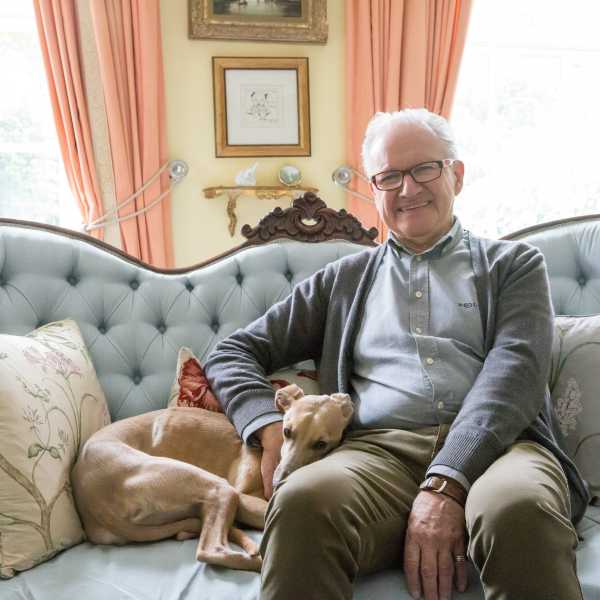
Love Exploring - Amazing Places From Fairy Tales and Fiction that Actually
Posted on 18 December, 2020
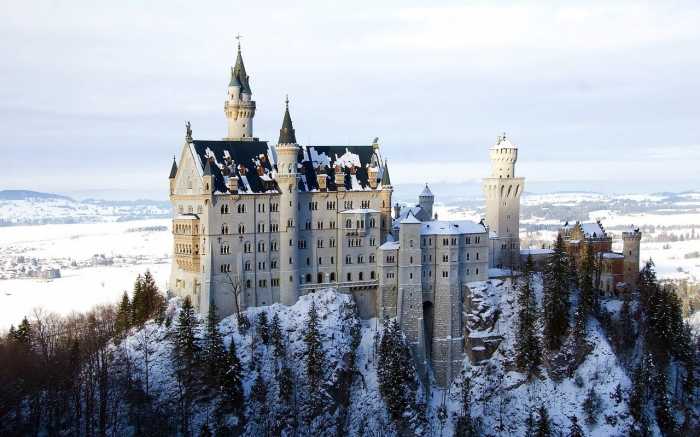
From enchanting castles and haunting ruins to emotive landscapes shrouded in myths and folklore, some of the greatest works of fiction and enduring fairy tales are based on real-world places. We take a look at locations around the globe that have been a source of inspiration for stories old and new…
Hannibal, Missouri, USA
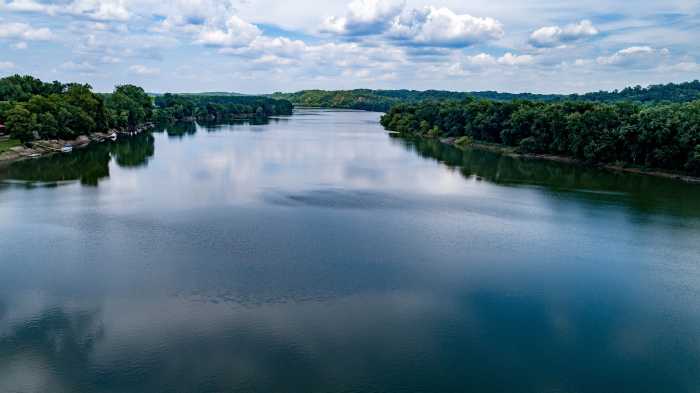
Image by Mike Gattorna from Pixabay
The protagonists of Mark Twain’s The Adventures of Tom Sawyer and The Adventures of Huckleberry Finn come from the fictional small town of St Petersburg in Missouri, which was based on his own childhood hometown of Hannibal. Jackson's Island, an uninhabited river isle which lies just off the riverside town, is also a central location in the tales. Most of the action in these classic stories takes place on and by the shores of the mighty Mississippi River as their adventures take the characters through Illinois, Kentucky and Arkansas.Dartmoor, Devon, England, UK
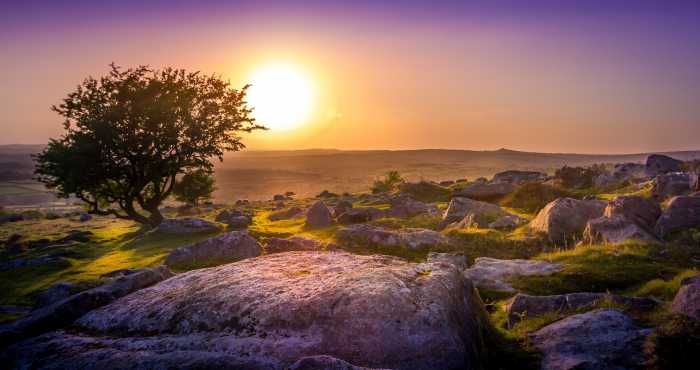
Image by piersoneill from Pixabay
The granite tors, swirling mist and mysterious mires (bogs) of Dartmoor form the brooding backdrop for one of the most famous Sherlock Holme’s tales – The Hound of the Baskervilles. Sir Arthur Conan Doyle spent time walking on the Devonshire moorlands in 1901 before writing his thriller about hellish hounds. The stirring, and often foggy, landscape is steeped in local legends and folklore, which also inspired Doyle's dark tale. Actual locations said to feature include the swampy Fox Tor Mire, the inspiration for the story's Grimpen Mire.
Lauterbrunnen Valley, Switzerland
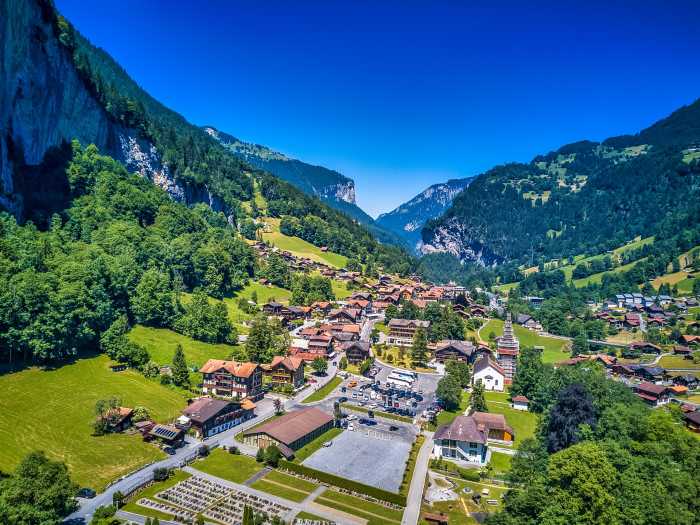
Image by nextvoyage from Pixabay
The inspiration for JRR Tolkien’s elfish kingdom of Rivendell was Lauterbrunnen Valley, an enchanting place of majestic mountains, forested dells and crashing waterfalls in Switzerland. The author travelled here in 1911 and its dramatic beauty left a lasting impression on him – in a letter to his son he acknowledged that the region later informed his vision for Rivendell. The verdant valley was part of his fantastical Middle Earth, which features in both The Hobbit and The Lord of the Rings trilogy.
Mount Olympus, Greece
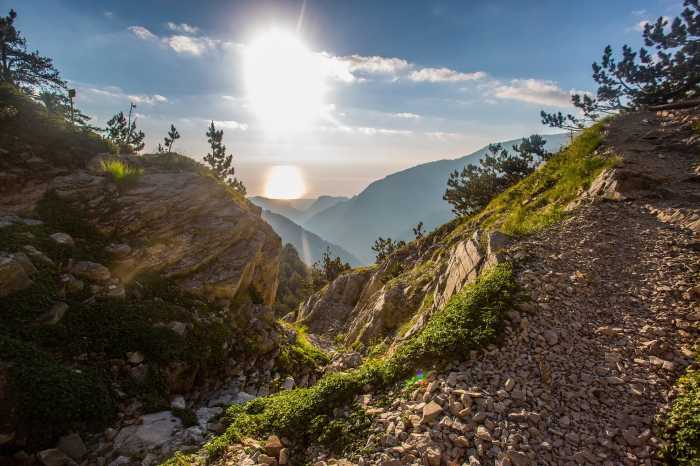
Image by Free-Photos from Pixabay
The highest mountain in Greece, Mount Olympus was the mythical home of mighty Zeus, king of the gods, and the other 11 Olympian gods and goddesses. In ancient Greek mythology its summit, Mytikas, was known as the Pantheon, and it was here that the capricious deities were said to convene to discuss and squabble over celestial matters and humankind. The nine muses, the daughters of Zeus, were believed to reside at the foot of the mountain. It's possible to hike up the peak to enter this sacred realm.
Sherwood Forest, Nottinghamshire, England, UK
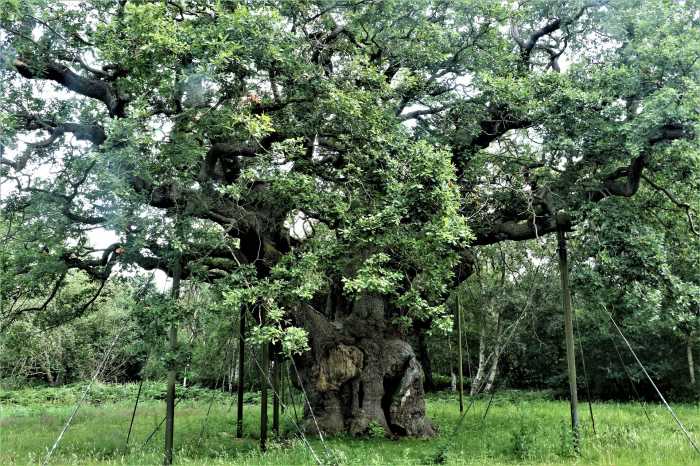
Image by David Reed from Pixabay
Leafy Sherwood Forest in Nottinghamshire is inextricably linked with one of England's most enduring folklore tales – that of the legendary outlaw Robin Hood who stole from the rich and gave to the poor. Theories abound as to the truth behind the tale, but whether Robin existed or not, the forest has a far-reaching history as a royal hunting forest that was used by many Norman kings, including King John and Edward I. The vast and ancient Major Oak, said to be where Robin and his band of merry men took shelter, is now a visitor attraction.
Mourne Mountains, County Down, Northern Ireland, UK
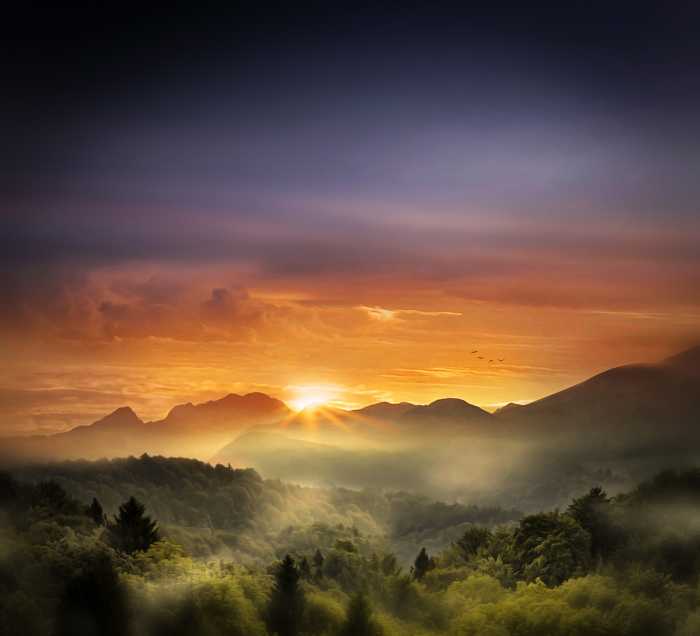
Image by Pezibear from Pixabay
Few fictional realms are as evocative as CS Lewis’s Narnia with its “heathery mountains”, “thymy downs”, “many rivers, plashing glens, mossy caverns and deep forests", as he described it in his fifth Narnia chronicle, The Horse and His Boy. Born and raised in Northern Ireland, the author was greatly influenced by the scenery around him including the bewitching Mourne Mountains in County Down. With its lush valleys, brooding granite tors and ethereal loughs, it's easy to imagine giants, dwarves and wicked queens roaming the dramatic landscape.
Troy, Turkey

Image by Nikola Belopitov from Pixabay
It's now widely agreed by historians that the ill-fated city of Troy from Homer's The Iliad actually existed. The Greek poet's vivid depiction of the (almost) impenetrable walled city and its noble citizens who were besieged for 10 years makes it one of the most famous cities in classical literature. Helen, Paris, King Priam and brave Hector may be mythical, but Troy was not and the ruins of the Bronze Age settlement can still be seen today at the archaeological site of Hisarlik, which sits on the Küçük Menderes River near the mouth of the Dardanelles in Turkey. Learn more about lost cities that have been 'rediscovered' here.
Riquewihr, Alsace, France
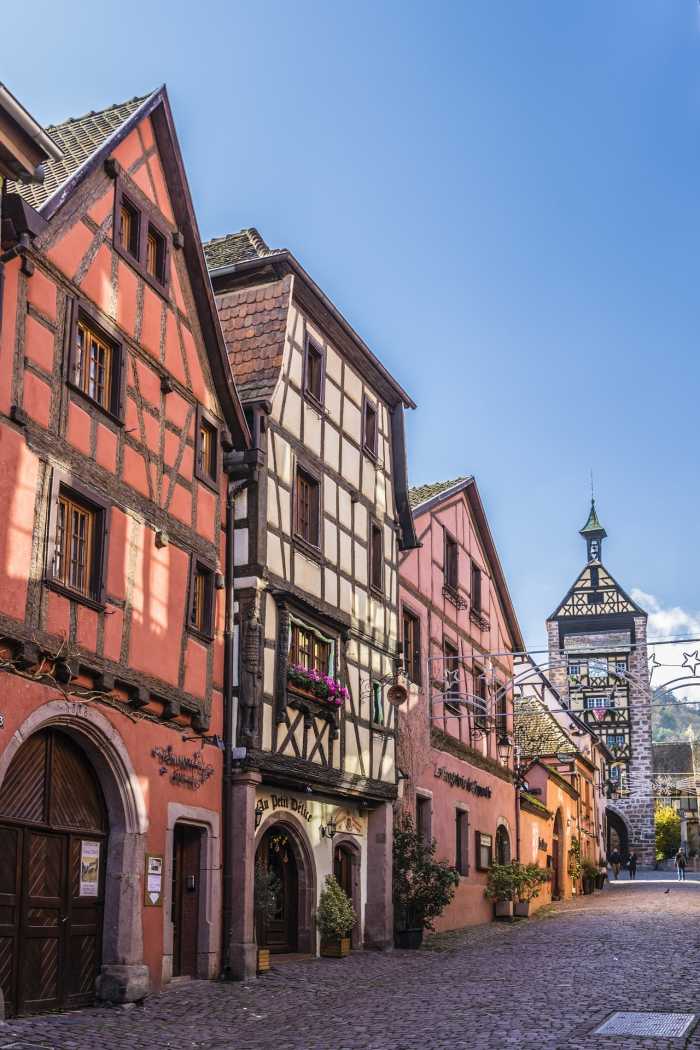
Strolling around this Alsatian town is like walking right onto a Disney set, except that Riquewihr is completely authentic. If it looks familiar, that’s because it is: Disney animators visited the medieval village when filming the latest version of the fairytale Beauty and the Beast, which was originally written by 18th-century French writer Gabrielle-Suzanne Barbot de Villeneuve. Their creative vision for Belle's hometown was undoubtedly inspired by its colourful half-timbered houses, cobblestone marketplace with a fountain and church spires. Here are 35 more stunning villages in France too.
Bran Castle, Romania
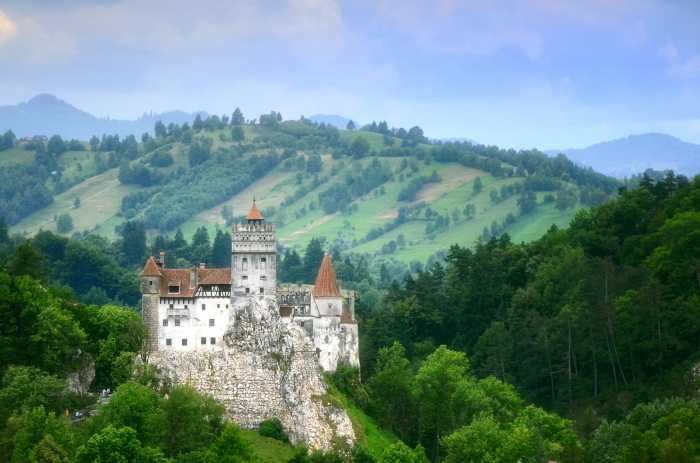
Image by danieldudu from Pixabay
Set atop a rocky precipice in the Southern Carpathians this formidable 14th-century castle is often linked with Bram Stoker’s fictional Count Dracula. Although the writer didn't visit Transylvania, a region steeped in centuries-old tales of vampires and werewolves, he did get the inspiration for his debonair vampire from 15th-century Romanian prince Vlad the Impaler (Vlad III Dracula). Bran Castle near Brașov has become associated with the Victorian-era novel mostly due to its location and wonderful architecture, which ticks all of the right Gothic boxes.
Whitby Abbey, Yorkshire, England, UK
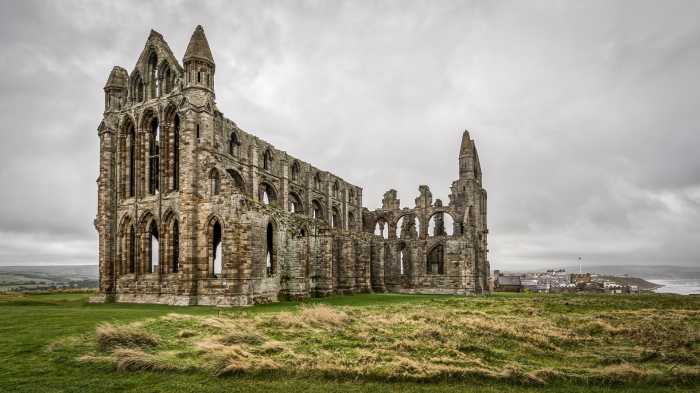
Image by Tim Hill from Pixabay
Another eerie structure indelibly linked with Stoker’s Dracula is Whitby Abbey, the ruins of a Benedictine monastery that loom above a windswept headland on the craggy Yorkshire coast. Bram Stoker stayed in the seaside town in 1890 when researching his novel. He would almost certainly have heard tales of a shipwreck that happened off the coast five years earlier. It was a Russian vessel called the Dmitry, which came from Narva. This was to become the Demeter from Varna that carries Dracula to Whitby in Stoker's story.
The Yorkshire Moors, England, UK
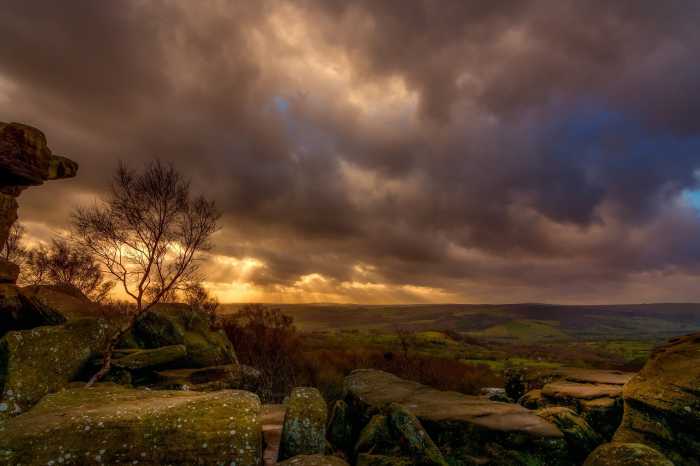
Image by Tim Hill from Pixabay
The wild and bleak scenery of the Yorkshire moors are central to Emily Brontë’s Wuthering Heights. All of the Brontë siblings were both inspired and oppressed by the haunting beauty of the moors that edged their isolated home in Haworth, West Yorkshire. The ruined farmhouse of Top Withens, which looms out of the brooding moorland nearby the Brontë Parsonage, is thought to have been the inspiration for Heathcliff's dwelling in Emily’s haunting masterpiece.
Castle Frankenstein, Germany
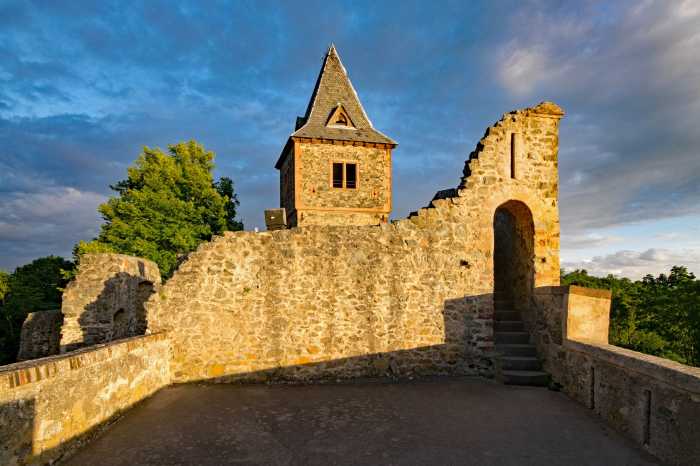
Supposed inspiration for Mary Shelley’s 19th-century horror novel, the spooky ruins of Castle Frankenstein sit above the Rhine Valley within the Odenwald mountain range. After eloping to Europe, the young writer and her husband Percy Bysshe Shelley travelled back to England by riverboat through Germany and passed near the castle. It’s thought she may have heard the tales of an alchemist (and alleged gravedigger) who experimented in finding the elixir of life and once lived in the foreboding-looking fortress.
Ashdown Forest, England, UK
Sadly, you won’t bump into a bumbling bear, timid piglet or a glum donkey on a walk around Ashdown Forest. But you will see people playing Pooh Sticks off the bridge near Chuck Hatch in honour of Winnie Pooh whose adventures were based in this bucolic part of East Sussex. AA Milne’s Hundred Acre Wood was inspired by the heath and woodland which he lived near and visited often with his son Christopher Robin. The illustrator EH Shepard also used the rolling high weald forest as inspiration. Now a walking trail takes hikers around some of Pooh’s haunts.
King’s Cross Station, England, UK
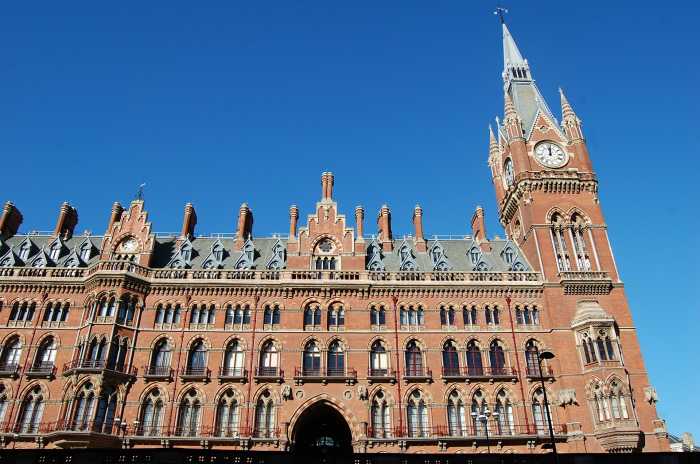
Image by MioImada from Pixabay
OK, so platform 9 ¾ may not actually exists (aside from a plaque outside the memorablia shop to lure Potter fans), but the grand Victorian station has a starring role in JK Rowling’s Harry Potter series. This is where Harry, Ron and Hermione come to pass through the portal into Hogsmeade Station to catch the Hogwart’s Express to Hogwart’s School of Witchcraft and Wizardry. The castle-like boarding school is said to have been inspired by the striking turrets of George Heriot's School, Edinburgh which handily you can catch a direct train to from King’s Cross.
Tintagel, England, UK
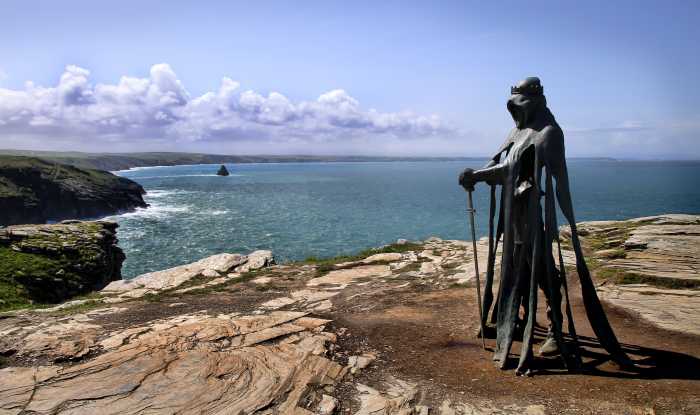
Image by Greg Montani from Pixabay
Brooding, solitary, and rugged, the evocative ruins of Tintagel castle lie scattered around a wind-whipped headland on the north Cornish Coast. The site is linked with King Arthur, thanks to medieval author Geoffrey of Monmouth who named Tintagel as the place where the legendary king of the Dark Ages was conceived. The ruins are from a 13th-century castle, but Tintagel's rich history dates from the 5th to the 7th centuries when it was an important Cornish stronghold. Now an imposing bronze statue clutching a sword commands the cliffside.
Hill Top Farm, England, UK
Beatrix Potter's magical tales and drawings of Peter Rabbit and his friends have captivated children for generations. She often holidayed in the Lake District and, after enjoying some success, went on to invest in farmland in the region, including Hill Top Farm in Near Sawrey. It went on to become a feature in many of her tales and she bequeathed it to the National Trust. The charming house remains exactly as Potter left it, as does the vegetable garden. With its beehive, flowerpots and old-fashioned garden tools, visitors half expect to encounter an angry Mr McGregor as they explore.
Unst, Scotland, UK
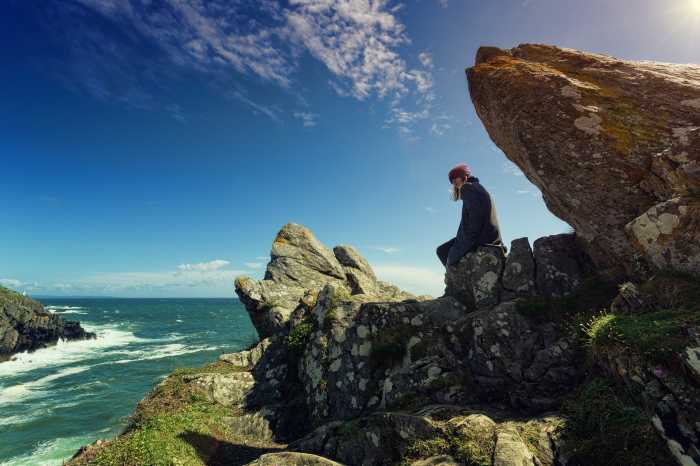
Image by My pictures are CC0. When doing composings: from Pixabay
With its frothing seas, soaring cliffs and grassy plains, it's easy to see how Unst could fire up the imagination. The solitary Shetland isle, the most northerly island in the UK, is said to have been a source of inspiration for Robert Louis Stevenson’s Skeleton Island, location for his classic tale of adventure Treasure Island. When he was young the Scottish writer accompanied his father, who was a lighthouse engineer, to inspect one of his lighthouses on Unst.
Gozo, Malta
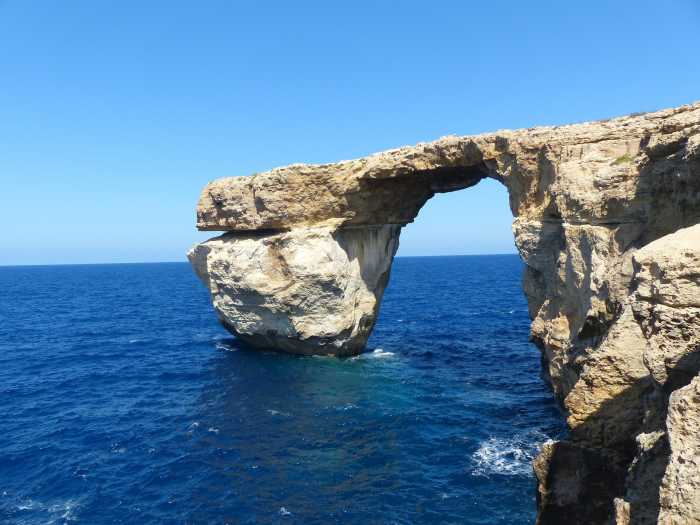
Image by pixabairis from Pixabay
Several places that appear in the ancient Greek poet Homer's epic poem The Odyssey are thought to have real-life locations in the Mediterranean. One of them is the enchanted island of Ogygia, where the nymph Calypso kept Odysseus captive for years. It's real location is laid claim to by a few places, including the Croatian isle of Mljet and Gozo in Malta. The Calypso Cave in the latter (pictured), set inside a cliff overlooking the island’s Ramla Bay, is said to be where the smitten nymph imprisoned the embattled Greek hero.
The Cyclopean Isles, Sicily, Italy
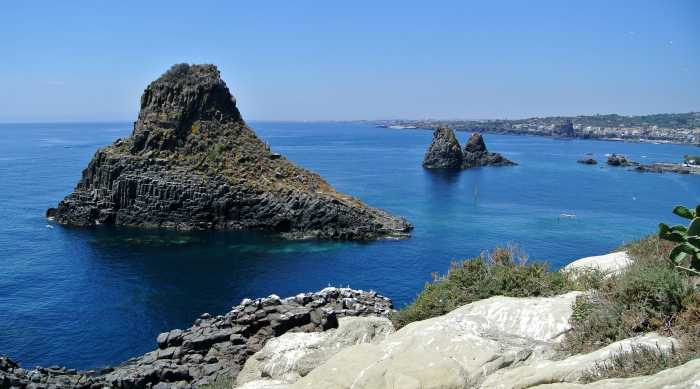
Image by David Mark from Pixabay
Another real-life location linked to Homer's The Odyssey is the three giant jagged sea stacks that loom out the sea off Sicily’s east coast. They're said to be the “great pinnacles” that the single-eyed giant Polyphemus tore from a mountain and hurled at Odysseus and his crew as they fled from the Island of the Cyclops on their ship. Known locally as the Cyclopean Isles, the striking rock formations can be spied just off the shore from the seaside village of Aci Trezza.
Eilean Shona, Scotland, UK

“Second to the right, and straight on till morning” is where you’ll find Neverland. Or so Peter Pan tells Wendy. But its real-world location is more earthly: Eilean Shona, a tiny isle on the west coast of Scotland, is thought to have inspired JM Barrie's fantastical land. The Scottish playwright and author rented the island for a holiday and wrote the screenplay for Peter Pan while staying here. It’s now an exclusive island retreat, owned by the Devereux-Branson family, so you can stay there too.
Long Island, New York, USA
The fictional townships of West Egg and East Egg that appear in F Scott Fitzgerald’s The Great Gatsby were based on Long Island’s Kings Point and Sands Point. Jay Gatsby's fictional home was in Kings Point from where he stared across the water towards the green light of Daisy Buchanan's house. The real-life grand residence of Land’s End, which inspired the home of Daisy, has since been demolished, but Sands Point has many ostentatious mansions, which seem to step straight from the pages of the Jazz Age-era novel.
Hamelin, Germany
Hamelin is another place connected with the Grimms’ fairytales. All crooked timbered houses and little lanes, the Lower Saxony town is the setting for the tale of the Pied Piper – a story inspired by medieval folklore. It certainly embraces its legendary status with rat trails marking the way to various Piper-themed attractions. It’s one of many locations on a 375-mile (603km) Fairy Tale Route through some of hilltop villages, cobblestoned towns, and dark forests that influenced the Grimms' dark and magical tales. See 40 more of Germany's towns and villages here.
Kerala, India
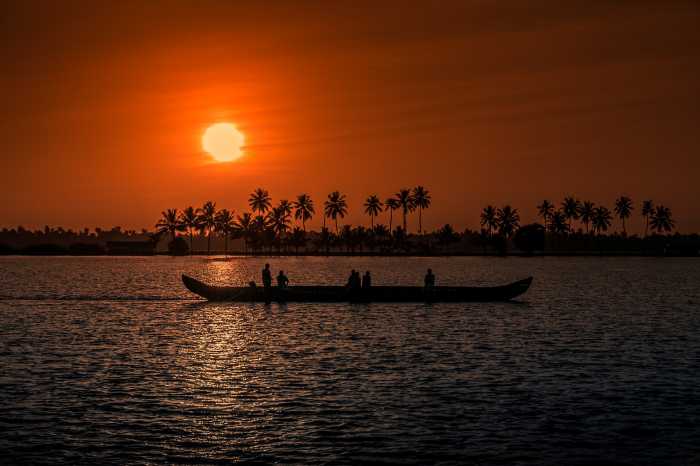
Image by Ponraj Krish from Pixabay
With its languorous and sensuous descriptions of the mangrove-lined rivers and sleepy backwaters of Kerala, The God of Small Things, debut novel of writer Arundhati Roy, put the southern Indian state firmly on the travel map. The author spent most of her childhood on the tropical south-west coast and based her 1997 Booker-Prize winning novel around the village of Ayemenem in the Kottayam district where she lived.
Slepe Heath, England, UK
The Wessex that forms the backdrop to many of Thomas Hardy’s novels was named after the old Anglo-Saxon kingdom with fictional towns and villages inspired by real places in south-west England. Hardy was born in Dorchester, Dorset, and wrote many of his early novels at his thatched cottage on the edge of Thorncombe Woods, which opens onto heathland. The fictional Egdon Heath, setting for The Return of the Native, was Slepe Heath – a dramatic heathland now owned by the National Trust.
The Old Cataract Hotel, Egypt
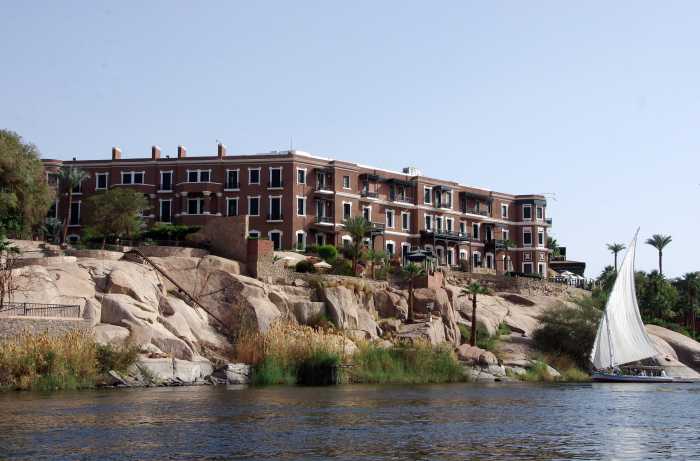
Sat high on the banks of the Nile in Aswan, the Old Cataract Hotel looks like it has a tale or two to tell. And that it does. It's hosted numerous celebrated guests over the decades including Agatha Christie, whose lasting fascination with the country influenced her writing. She stayed here when researching Death on a Nile and set parts of the Hercule Poirot mystery here and nearby temple Abu Simbel. The grand 19th-century building was also used as a location for the 1978 movie of the detective novel. Today guests of the Sofitel Legend Old Cataract Hotel can book into the Agatha Christie suite.
Maienfeld, Switzerland
With its green meadows, tinkling goat bells and snow-capped peaks, Maienfeld was the setting for Johanna Spyri’s classic childhood story Heidi. Set in the late 19th century, its centres on a little orphan girl who is sent up into the Swiss Alps to stay with her grandfather in a humble wooden chalet. Now, fans of the quaint stories can step back into her world at Heidi’s village, which sits above the historic town in the Bündner Herrschaft region of Graubünde, complete with replica chalet, schoolroom and barn with goats and chickens.
Cartagena, Colombia
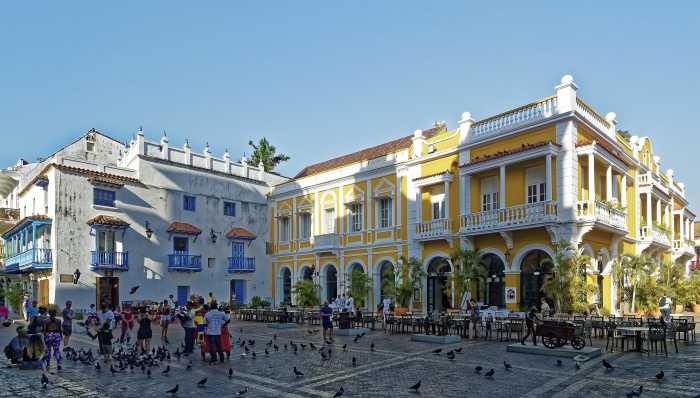
Colombia imbues the pages of Gabriel García Márquez’s evocative novels and although it’s never mentioned by name, the Caribbean city of Cartagena appears often. When working as a reporter in 1949, Márquez was sent to the Santa Clara Convent to cover the story of a crypt being uncovered during an excavation. It inspired his book Of Love and other demons. Now a hotel, the former convent has a special hall in memory of the Pulitzer prize-winning novelist. His seafront house also appeared in Love in the Time of Cholera. Walking tours now take fans around his old haunts and book locations in the old walled port city.
Svalbard, Norway
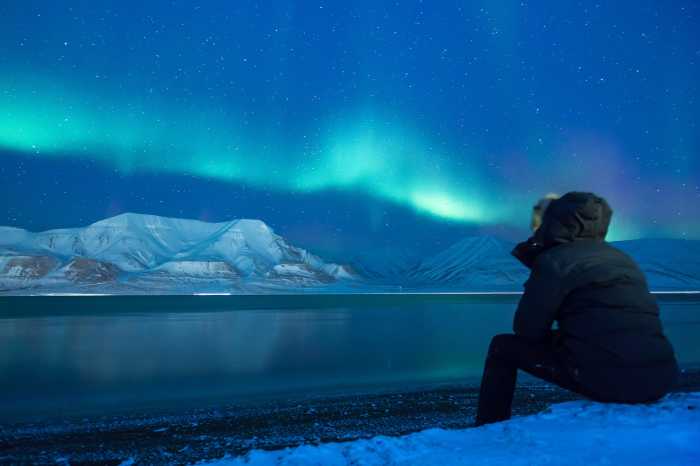
Image by Noel Bauza from Pixabay
With polar bears outnumbering humans, majestic mountains, surreal glaciers and stark mining towns, the far-flung Arctic archipelago of Svalbard is one of many real-life locations given a magical edge in in Philip Pullman's fantasy trilogy His Dark Materials. This is where heroine Lyra Belacqua comes on her journey to the far north to rescue her friend Roger, seek advice from the witches and enlist the help of armoured polar bear Iorek Byrnison. Seeing the aurelia borealis dance above this icy Norwegian wilderness really is like seeing into another world. Here are six things you musn't miss in Svalbard.
Sababurg Castle, Germany
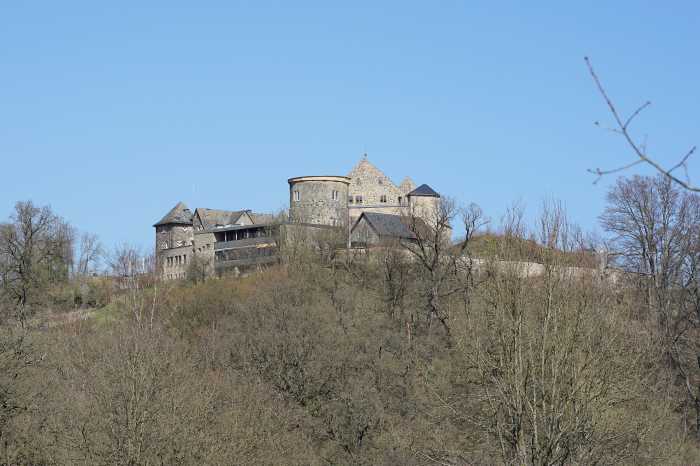
Image by Andreas Lischka from Pixabay
Built in the 14th century as a royal hunting lodge, the hilltop Sababurg Castle allegedly formed the basis for the Grimms Brothers’ fairy tale Sleeping Beauty, written in 1812. They lived in the nearby city of Kassel and would have known of these evocative ruins that lay surrounded by the deep forests of Reinhardswald.
Neuschwanstein Castle, Germany
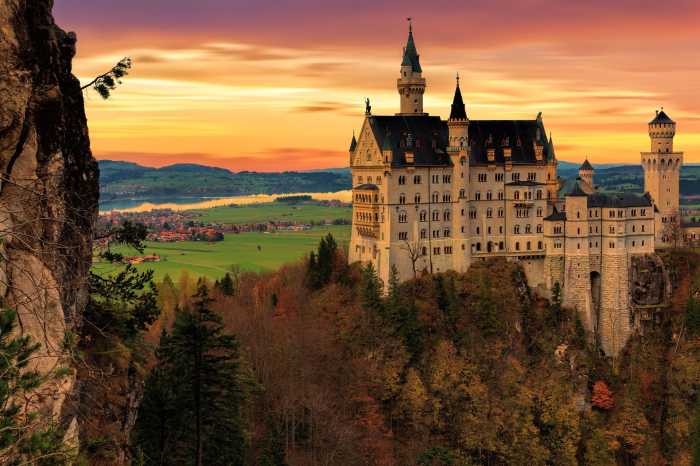
Image by My pictures are CC0. When doing composings: from Pixabay
Perched high in the Bavarian Alps, Neuschwanstein Castle is utterly enchanting with its fairy-tale white façade and blue pointed turrets. It was the inspiration for Walt Disney’s imagining of Sleeping Beauty Castle in Disneyland, California, after the animator visited it while on holiday in southern Germany. Built in 1868 by the eccentric king of Bavaria, Ludwig II, it was meant to be a grand recreation of Hohenschwangau Castle, where he had spent his childhood. Now it's the most famous of all of Germany's picturesque palaces.
To see the original post, please visit - https://www.loveexploring.com/galleryextended/101608/destinations-from-fairy-tales-and-fiction-that-actually-exist?page=1
Tags:


